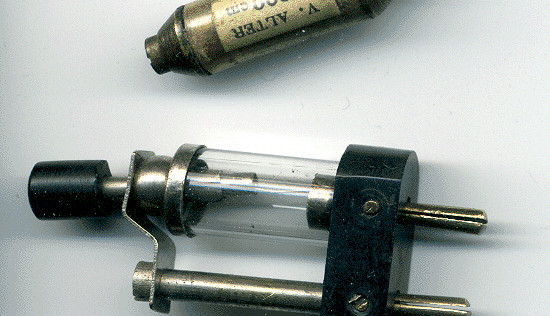Small Circuits Revival – Episode 10
on

Direct-Conversion Receiver
idea: Elex-team
In the past, radio had something ‘magical’, and that is not all that surprising: you solder a few ‘unsightly’ components together, tie an antenna and headphones to it and... it is unbelievable, but through the noise, voices and music can be heard!
These first radio receivers were so-called direct-conversion receivers because they had no bells and whistles, and were pared down to the absolute minimum: the signal received by the antenna is selected using a circuit consisting of a (tunable) capacitor and an inductor and is then detected with the aid of a remarkable component that is called a crystal and subsequently made audible with a (very high impedance) crystal earphone.
This crystal detector... That was something remarkable! This consisted of a galena crystal that you had to ‘tickle’ with a metal contact wire, using a considerable amount of finesse, until you found a spot that exhibited the desired detection characteristic. It was barely known why it worked like that (just as many ‘smartphone zombies’ these days have no idea how their gadget actually works). Today we know that it was the predecessor of the point-contact diode, which in turn is the predecessor of all modern semiconductor diodes. Figure 1 shows the general schematic of such a super-simple direct-conversion receiver.

Such a thing invites experimentation – and that is exactly what we have done in Figure 2. There we have added an active element (a transistor, or a FET, to be more specific) that serves a dual purpose. In the first instance this transistor provides a considerable amount of AF gain so that a clearly audible signal is produced by the ear piece. And secondly, this FET has a very high input impedance so that the tuning circuit is barely loaded and the detection diode – a germanium device – can be connected to the ‘top side’ of the tuned circuit. There is no need to do any ‘difficult’ things, such as winding a coil with taps. All up, you will be pleasantly surprised by the sensitivity of this simple radio!
When it comes to the construction: these few components can be interconnected without any difficulties using a point-to-point ‘floating’ construction method without using a circuit board. You can wind the inductor yourself (about 85 turns of enamelled copper wire of 0.2 mm around a ferrite rod about 10 cm long) or use a ready-made filter inductor with the value indicated in the schematic.
The circuit can be powered from a 9-V PP3 / 6LR22 ‘block’. Enjoy your tinkering; next week we will jazz this circuit up a little.




Discussion (1 comment)
fuso 5 years ago
nice one !